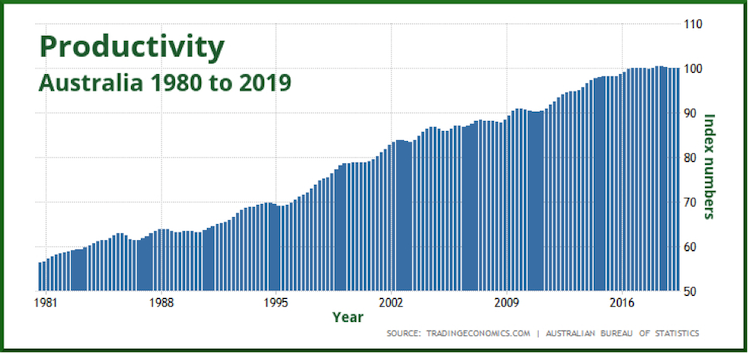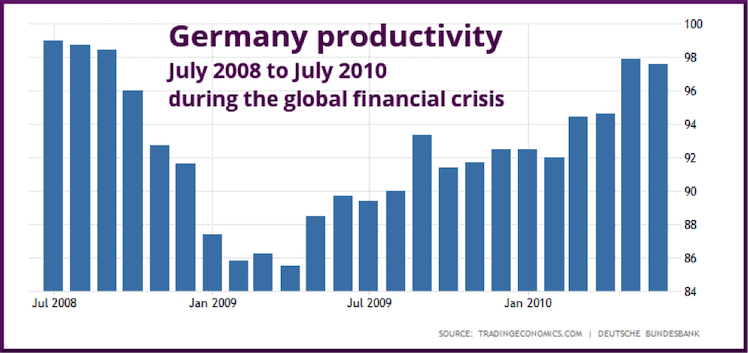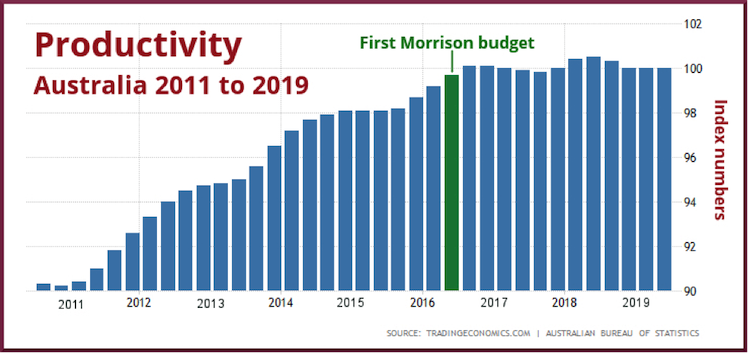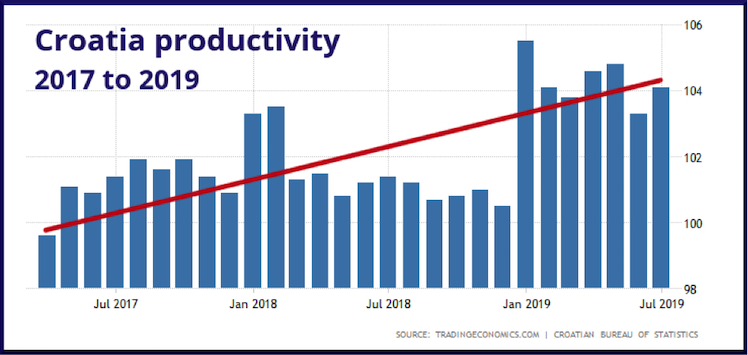Productivity has tanked under this Government and Treasurer, Josh Frydenberg, is floundering. Result? Australia is providing a classic study in how not to build a productive economy. Alan Austin reports.
Croatia’s Banje Beach in Dubrovnik was extra busy this summer. The Government’s efforts to boost the economy through tourism and other initiatives have succeeded. Croatia, along with many other successful regimes, has lifted productivity and is now able to deliver the other outcomes its citizens want. These include steady jobs, reliable incomes, wage growth, home ownership, household wealth and a higher quality of life.
In his speech to Australia’s Business Council last month, Treasurer Josh Frydenberg said “we must increase productivity to secure a brighter future with even higher incomes.”
This is true. Is it also an acknowledgment that the Coalition has failed in this over the last six years? Productivity in Australia has stagnated badly for most of this Government’s term. Virtually all other indicators of economic health have also declined relative to comparable countries. So the Treasurer has a challenge ahead of him.
Corporate profits and government spending boom while wages and economy languish
Why productivity matters
Productivity is the measure of the outputs of goods and services generated by the inputs of labor and capital. The Australian Bureau of Statistics measures productivity quarterly by calculating gross domestic product (GDP) generated per hour worked.
More output with less input boosts productivity. This is a good thing because it increases profits and allows companies to offer higher wages and strengthen other contributions to the community.
Governments want higher productivity because this leads to improvement in the national outcomes voters want to see. Central banks such as Australia’s Reserve Bank observe productivity to report on how well the economy is using its resources, or total capacity. Low productivity leads to low GDP growth and, if this becomes negative for two quarters, then recession. Analysts, like this journal, examine productivity to see if businesses and governments are succeeding or failing.
Basically, productivity derives from smarter machines, smarter entrepreneurial activity, smarter collaboration between bosses and workers, all pulled together by smarter governments.
Experience in Australia
Through most of Australia’s history, productivity has steadily increased. There have been occasional flat periods, such as in 1988 and 1989. And occasional dips, such as in 1986 and again in 1995. These have usually been followed by strong surges.

When Labor took office in 2007, productivity was a lowly 88.2 index points, having risen in fits and starts through the Howard years. It increased to just above 90 points by the end of 2009, where it stayed until the end of 2010. Remarkably, productivity did not collapse during the global financial crisis (GFC), as happened dramatically in Japan, the United Kingdom, France, Switzerland, Denmark, Germany [see below] and elsewhere.

As Australia emerged from the GFC in 2011, one of the strongest streaks in history began. Productivity increased or held its level for an impressive 24 consecutive quarters. Six years! This came to a grinding halt in early 2017, as the first Turnbull/Morrison budget which abandoned the last of Labor’s settings took effect.

Since then it has shifted up and down erratically, but now appears to have jammed at around 100 index points. Until this rises again there is little hope for improvement in prosperity. There is no sign of this under current economic settings.
Experience in other countries
What is happening elsewhere is quite revealing. We have current productivity data for 41 countries. Most are developed economies, but they also include emerging economies Mauritius, Thailand and Romania.
The overwhelming majority has enjoyed increases over the last three or four years. Eight countries show no significant rise or fall, 19 show a steady rise and nine show a strong, emphatic rise. These big winners are Croatia, Norway, Denmark, South Korea, Hong Kong, Malta, Estonia, Thailand and Mauritius.

That leaves just five economies where productivity has fallen. These are Greece, Germany, Luxembourg, Japan and Australia.
Most of the nine big winners have minimum wages in place and have been delivering strong wage rises. All nine have seen their jobless rates tumble. Most have ensured that low wage earners and welfare recipients have a liveable income. This is spent in the retail sector, which then flows through to the rest of the economy.
Coalition responses
Treasurer Frydenberg has nominated three solutions to Australia’s stagnating productivity. Let’s assess them:
- “creating the right incentives for workers and businesses through lower taxes, cutting red tape and flexible labour markets”.
Applying these as panaceas without careful targeting will do more harm than good. Australia does need lower taxes overall. It needs the top end and the foreign corporations to pay a greater share so the bottom end can spend more in the retail economy.
Cutting red tape in the building industry has led to a dramatic rise in the rate of construction fatalities.
If “flexible labour markets” is a euphemism for “less union power”, then that is exactly the wrong solution.
- “It means building the infrastructure needed to address congestion in our cities and better connect our regions”.
Correct. But the Coalition has done precisely the opposite. Australia’s last financial year saw a disastrous decline in total construction of 9.4 per cent, the worst reversal since the 2001 global recession. That was the fifth decline in the six years the Coalition has been in office.
Since the Bureau of Statistics started keeping records in the mid 1980s, there have only been nine negative years of infrastructure investment. The current Government has presided over five of them.
- “It means having a health and education system that underpins the wellbeing of our community while equipping workers with the appropriate skills and training to maximise productivity”.
Also correct. But, again, the Coalition has completely failed to implement these lofty ambitions.
The way forward
The critical issues Australia must address in light of its glaring productivity failures include:
- Restoring the trade unions to a place where they participate constructively in shaping industry and wage policy.
- Reversing the decisions which have depressed wages. This means restoring penalty rates and lifting the minimum wage.
- Resuming the collection of company taxes from those corporations which used to contribute wealth and income to Australia’s budget but haven’t since the Coalition took office.
- Commencing taxation of highly-profitable foreign corporations which have never paid taxes.
- Applying this extra revenue immediately to infrastructure and other community amenities.
- Applying extra revenue also to boosting the disposable incomes of welfare recipients and low income workers.
These will lift productivity now and bolster the economy in the future. Just ask Croatia’s economists, business leaders and unionists now basking together on Banje Beach.
——————–
https://www.michaelwest.com.au/in-supporting-jobless-australia-comes-a-stone-cold-motherless-last/
Public support is vital so this website can continue to fund investigations and publish stories which speak truth to power. Please subscribe for the free newsletter, share stories on social media and, if you can afford it, tip in $5 a month.
Alan Austin is a freelance journalist with interests in news media, religious affairs and economic and social issues.

